Research
Our research focuses on the chemical transformations and physical fluxes of naturally-occurring particles in the ocean, with an emphasis on rapid processes that alter these particles as they cross major earth* system boundaries—e.g., into the ocean across coastlines, downward from the sunlit surface ocean through the “twilight zone”, upward from the bottom through sediment resuspension, through hydrothermal vents into cold, deep waters, and *maybe within the oceans of ice-covered worlds beyond Earth!
Our projects (below) focus mainly on the ocean’s biological carbon pump which transfers organic carbon from the sunlit surface ocean into the interior. Other current interests include development of new methods for autonomous, in situ measurements of organic carbon pools, validation of ocean carbon dioxide removal methods, understanding the controls on the attenuation of sinking particle fluxes in the ocean, and foundational work modeling the optical properties of extraterrestrial oceans.
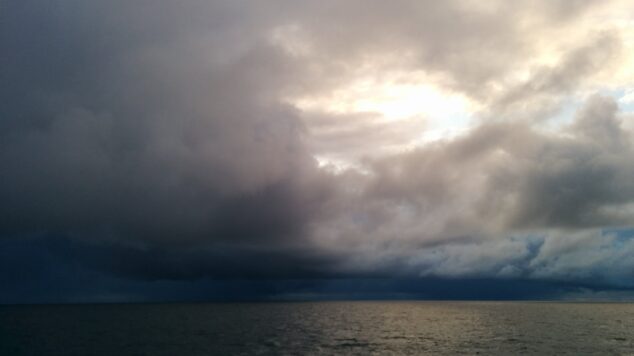
Towards in situ bio-optical observations on ice-shrouded ocean worlds
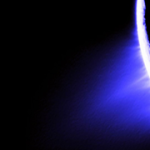 How might the optical signatures of ocean microbes be used to detect life beneath the ice-covered seas of Jupiter and Saturn’s moons? The spatial distribution of life in the hidden oceans below the ice on “ocean worlds” beyond Earth is not likely to be uniform, but rather clustered near sources of energy and chemical gradients such as water-ice boundaries, seafloor hydrothermal vent sites, and critically, at the surfaces of suspended solid particles in the water. Targeted measurements of these features will first require surveying vast ocean volumes using in situ optical sensors informed by state-of-the-art oceanographic monitoring strategies on Earth. In this project, supported by the Hypothesis Fund, we will use modeling and laboratory measurements to answer the following questions: 1) How should underwater, active optical sensors be optimized to rapidly characterize particulate biological signatures on ocean worlds beyond Earth? and 2) What oceanic environments on Earth are the closest analogs, in terms of their inherent optical properties, to oceans elsewhere in our solar system?
How might the optical signatures of ocean microbes be used to detect life beneath the ice-covered seas of Jupiter and Saturn’s moons? The spatial distribution of life in the hidden oceans below the ice on “ocean worlds” beyond Earth is not likely to be uniform, but rather clustered near sources of energy and chemical gradients such as water-ice boundaries, seafloor hydrothermal vent sites, and critically, at the surfaces of suspended solid particles in the water. Targeted measurements of these features will first require surveying vast ocean volumes using in situ optical sensors informed by state-of-the-art oceanographic monitoring strategies on Earth. In this project, supported by the Hypothesis Fund, we will use modeling and laboratory measurements to answer the following questions: 1) How should underwater, active optical sensors be optimized to rapidly characterize particulate biological signatures on ocean worlds beyond Earth? and 2) What oceanic environments on Earth are the closest analogs, in terms of their inherent optical properties, to oceans elsewhere in our solar system?
Developing a platform-agnostic sediment trap controller and imaging sensor

The ocean naturally moves carbon produced by living organisms from the atmosphere to deep water, and this plays an important role in how Earth’s climate may respond to increasing amounts of carbon dioxide. Additionally, some have proposed attempting to intentionally accelerate this process in an effort to reverse human carbon dioxide emissions. However, teasing apart the different biological influences that drive sinking carbon remains a major challenge. The tools that are required to measure sinking carbon are often expensive and specialized, limiting their accessibility. In this NSF-OTIC funded project, a camera-equipped sediment trap that catches and identifies sinking particles will be developed, tested, and refined. It will utilize openly shared software, and hardware designs that are based upon commercially-available components, to enable easier adoption by other researchers.
Do biological particles scavenge and remove microplastic fibers from the ocean?
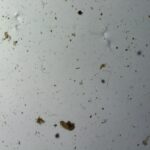 What happens to plastic waste after it gets into the ocean? Evidence shows that it gets broken down into smaller and smaller pieces (“micro-plastics”). With support from the University of Maine MARINE Initiative, master’s student Mikayla Clark investigated whether sinking aggregates of organic detritus might carry microplastics down into deeper water, affecting the fate of plastic waste in the ocean.
What happens to plastic waste after it gets into the ocean? Evidence shows that it gets broken down into smaller and smaller pieces (“micro-plastics”). With support from the University of Maine MARINE Initiative, master’s student Mikayla Clark investigated whether sinking aggregates of organic detritus might carry microplastics down into deeper water, affecting the fate of plastic waste in the ocean.
Remote sensing of CDOM in Maine's estuaries
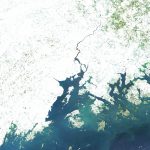 Maine’s coastal waters contain a rich mix of phytoplankton, marine organic matter, suspended particles. With NASA EPSCoR support, we are exploring links between the light-absorbing and scattering properties of colloidal matter in our local estuaries, and the information about water quality that can be retrieved from satellite imagery such as the example shown here.
Maine’s coastal waters contain a rich mix of phytoplankton, marine organic matter, suspended particles. With NASA EPSCoR support, we are exploring links between the light-absorbing and scattering properties of colloidal matter in our local estuaries, and the information about water quality that can be retrieved from satellite imagery such as the example shown here.
EXPORTS sediment trap project
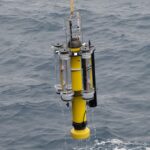 We collected field observations to characterize the strength and variability in the ocean’s “biological carbon pump” across contrasting sites in the ocean. The observations are supporting development of better models to predict changes in the ocean’s biological carbon uptake. The EXPORTS program is a large, interdisciplinary and multi-institutional effort supported by the NASA Ocean Biology and Biogeochemistry program. The sediment trap team (led by Estapa at the University of Maine) collected and characterized sinking particles using a flotilla of sediment traps, cameras, and innovative sampling techniques.
We collected field observations to characterize the strength and variability in the ocean’s “biological carbon pump” across contrasting sites in the ocean. The observations are supporting development of better models to predict changes in the ocean’s biological carbon uptake. The EXPORTS program is a large, interdisciplinary and multi-institutional effort supported by the NASA Ocean Biology and Biogeochemistry program. The sediment trap team (led by Estapa at the University of Maine) collected and characterized sinking particles using a flotilla of sediment traps, cameras, and innovative sampling techniques.
Spring Bloom and Carbon Export in the North Atlantic
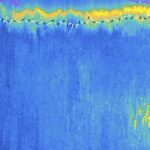 With collaborators at MBARI and WHOI and support from NSF Chemical Oceanography, we are using profiling floats equipped with biogeochemical sensors to investigate the timing, magnitude, and associated carbon export from the spring bloom in the North Atlantic Ocean.
With collaborators at MBARI and WHOI and support from NSF Chemical Oceanography, we are using profiling floats equipped with biogeochemical sensors to investigate the timing, magnitude, and associated carbon export from the spring bloom in the North Atlantic Ocean.
Bio-optical Sensor to Detect Sinking Particles
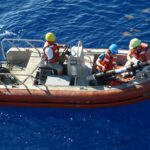 In partnership with Sequoia Scientific (www.sequoiasci.com) and with funding from the NSF Small Business Technology Transfer program, we designed a sensor for the detection of sinking particulate carbon in the ocean, which is a key pathway in the ocean’s biological carbon cycle. The sensor will be designed from the ground up for use with distributed, autonomous profiling floats.
In partnership with Sequoia Scientific (www.sequoiasci.com) and with funding from the NSF Small Business Technology Transfer program, we designed a sensor for the detection of sinking particulate carbon in the ocean, which is a key pathway in the ocean’s biological carbon cycle. The sensor will be designed from the ground up for use with distributed, autonomous profiling floats.
